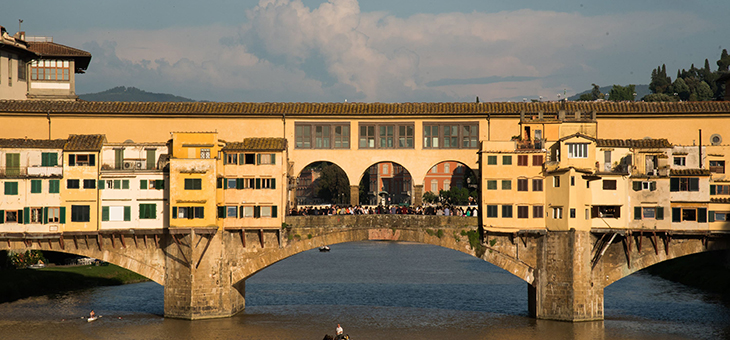Proudly fanning their tail feathers, peacocks parade around the rims of ceramic plates for sale in Florentine shop Sbigoli Terrecotte. Along with plump pomegranate kernels and emerald green hills dotted with Cyprus trees, the scene is one of many traditional Tuscan designs revived and replicated by Antonella Cini and her daughter.
Dating back to 1859, the small store tucked between medieval towers on Via Sant’Egidio, is one of the few surviving examples of the artisanal entrepreneurship that helped Florence blossom into one of Italy’s most prosperous and forward-thinking cities.
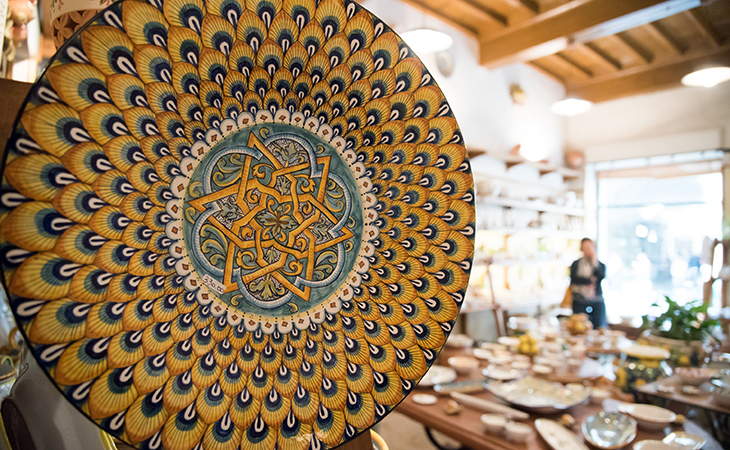
Hidden away at the back, a small workshop stacked with paint palettes and kiln-baked earthenware is proof of the labour and love invested in each piece – a refreshing alternative to the mass-produced products crowding so many high streets today.
Read more: Don’t see this when visiting Italy
“It’s getting much harder to find terracotta masters,” laments Ms Cini, who helps run the shop with her parents and sister. “As generations change, the knowledge is dying. It’s hard, but we still love what we do.”
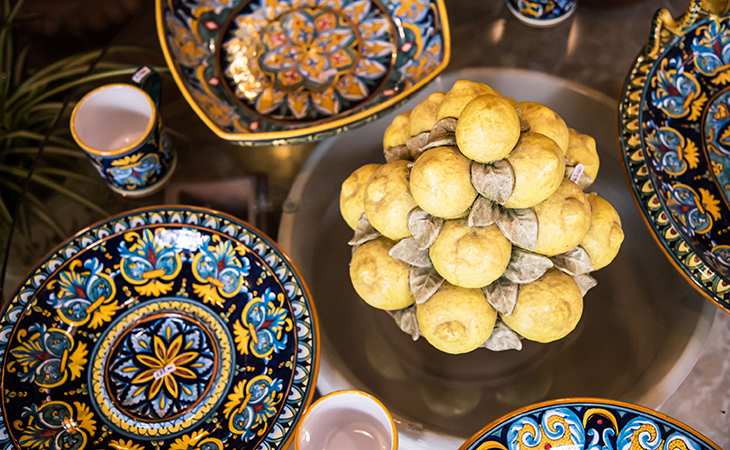
A cluster of terracotta rooftops dominated by Brunelleschi’s magnificent cathedral dome, Florence played a significant role in shaping Italy’s culture and commerce. In the Middle Ages, Dante Alighieri created a blueprint for the modern Italian language with his epic narrative poem Divine Comedy, and in the mid-15th century, Lorenzo Ghiberti sparked the Renaissance movement with his innovative, three-dimensional designs for the Baptistery doors.
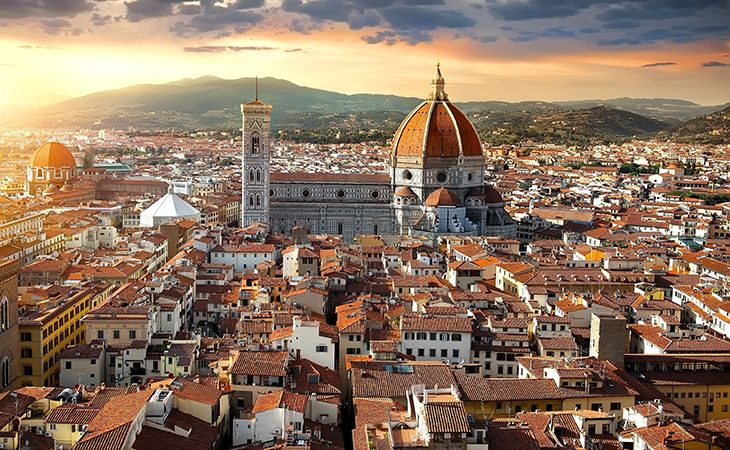
Architecturally beautiful and spewing with history, Florence could easily be classed as a museum piece. But beyond its gilt-framed masterpieces and glorious stucco facades, there’s a living, breathing community still pulsing with energetic activity.
If you want to appreciate the past while having some present-day fun, try these essential Florentine activities.
Eat tripe at Cibreo
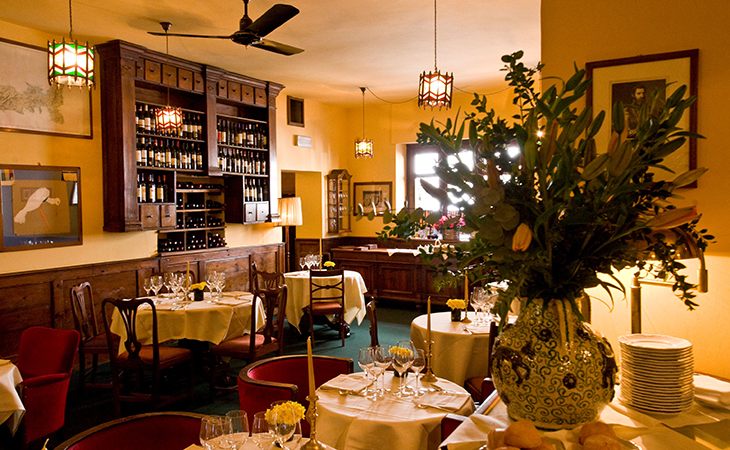
Celebrity chef Fabio Picchi has built a gastronomic empire in a busy corner of Sant’Ambrogio, not far from one of the city’s biggest fresh food markets, San Lorenzo. In 1979, he opened Il Cibreo – a fine-dining brasserie decorated with velvet seats and mirror-backed bars – and has since expanded with the more economical Cafe Cibreo opposite, a noodle bar, a fast-food ravioli outlet and a mobile lampredotto (tripe) trailer. His food is quintessentially Tuscan – liver pates, chicken meatballs and oil-soaked peppers – and the atmosphere is lively day and night.
Read more: When is it cheap to fly to Italy?
Drink an aperitivo at Procacci
The smell of truffle is deliciously overpowering at this postage stamp-size bar and delicatessen in the city centre. Their famous tartufo panini is best served with a glass of prosecco – either at the bar or huddled around stand-up tables. Founded in 1885, the company once supplied truffle delicacies to the king; expect to find anchovies, artichoke cream and foie gras flavoured with the ‘Tuscan gold’.
Rest your head at Hotel Continentale
Part of the upscale Lungarno collection, this fashionable, white-themed property pays homage to Italy’s 1950s cinematic sirens. Overlooking the Ponte Vecchio (bridge), it’s in a prime position for exploring major landmarks, such as the Uffizi Gallery and Gothic Cathedral – although from the peaceful rooftop bar where breakfast is served, crowds of tourists disappear into a distant hum. Early morning, the open-air space is an ideal place to sip a cappuccino as swallows flit overhead, and at night, it’s a cool, breezy spot to enjoy a cocktail.
Stock up on potions at Farmaceutica di Santa Maria Novella
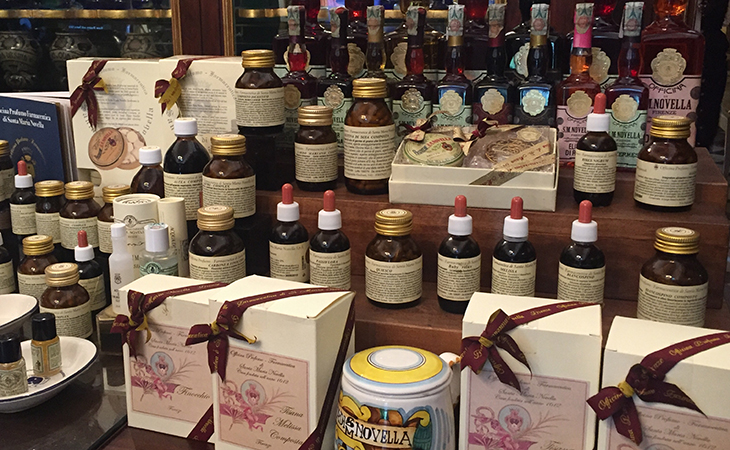
Originally concocted by Dominican monks in the 14th century, rosewater produced on these premises is now sold worldwide. Nothing, though, compares to visiting the original shop adjoining the monks’ cloisters, where wooden cabinets stocked with glass bottles reflect an original 17th century design. A museum tells the story of the company, and there’s also a cafe to sit back and enjoy the surroundings.
Admire art at the Uffizi
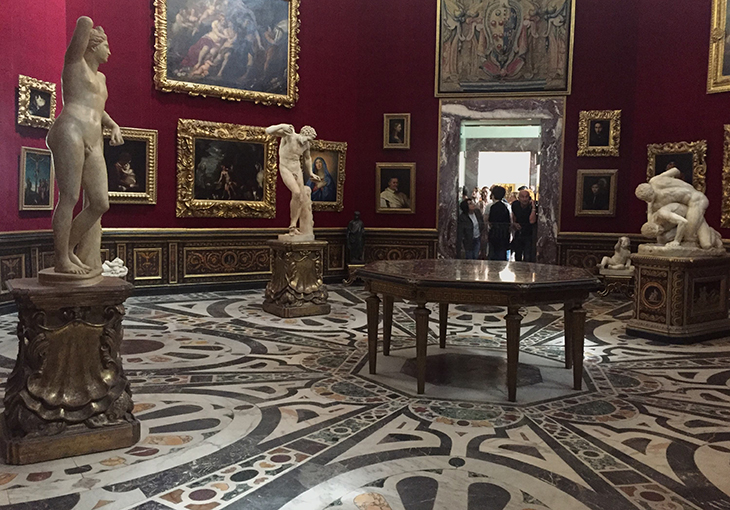
Originally built as offices for the government judiciary in the 16th century, Italy’s most popular art gallery opened as a museo (a place for the muses) in 1769. The showstoppers here are undoubtedly Botticelli’s triumphant The Birth of Venus and Primavera – but don’t dismiss less well-known works. Unfortunately, there’s no quiet time to visit, so booking timed tickets online is recommended.
Pose for pictures at San Miniato

Perched on a hilltop a 20-minute walk from the Ponte Vecchio, this 1000-year-old church is a fine mishmash of Romanesque and Byzantine styles. Turn up when the monks are singing vespers and it’s a peaceful place for contemplation too. Outdoor terraces command fine panoramic views of the city and shimmering Apennine mountains in the distance, and are less busy than nearby favourite photo-stop Piazzale Michelangelo. Follow the road down to San Niccolo – a bohemian neighbourhood on the south bank – and enter one of the ancient stone gates to find a huddle of modern galleries and artisanal boutiques.
Read more: Embrace the future by learning how to hug a tree in Italy
Sample historic ice cream at Antica Gelateria Fiorentina
Eating gelato is an Italian institution, and Florentines have laid their own claim to inventing the creamy dessert. Responding to a request by Grand Duke Cosimo I de’Medici to make an impressive dessert, architect Bernardo Buontalenti presented a sorbet with eggs, salt, lemon, honey and milk. This is one of the few parlours permitted to replicate his creation.
Have you visited Florence? Or is it on your must-visit list? Why not share your favourite thing about the city in the comments section below.
– With PA
If you enjoy our content, don’t keep it to yourself. Share our free eNews with your friends and encourage them to sign up.

